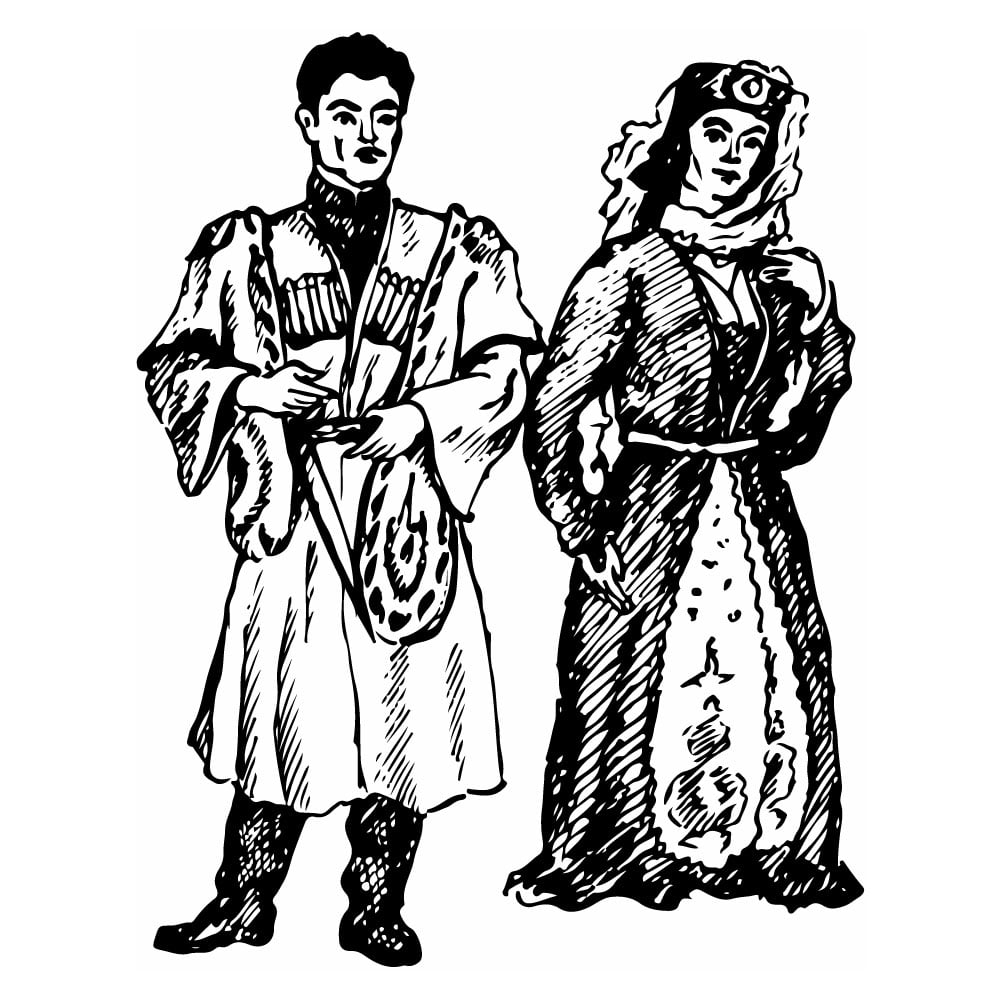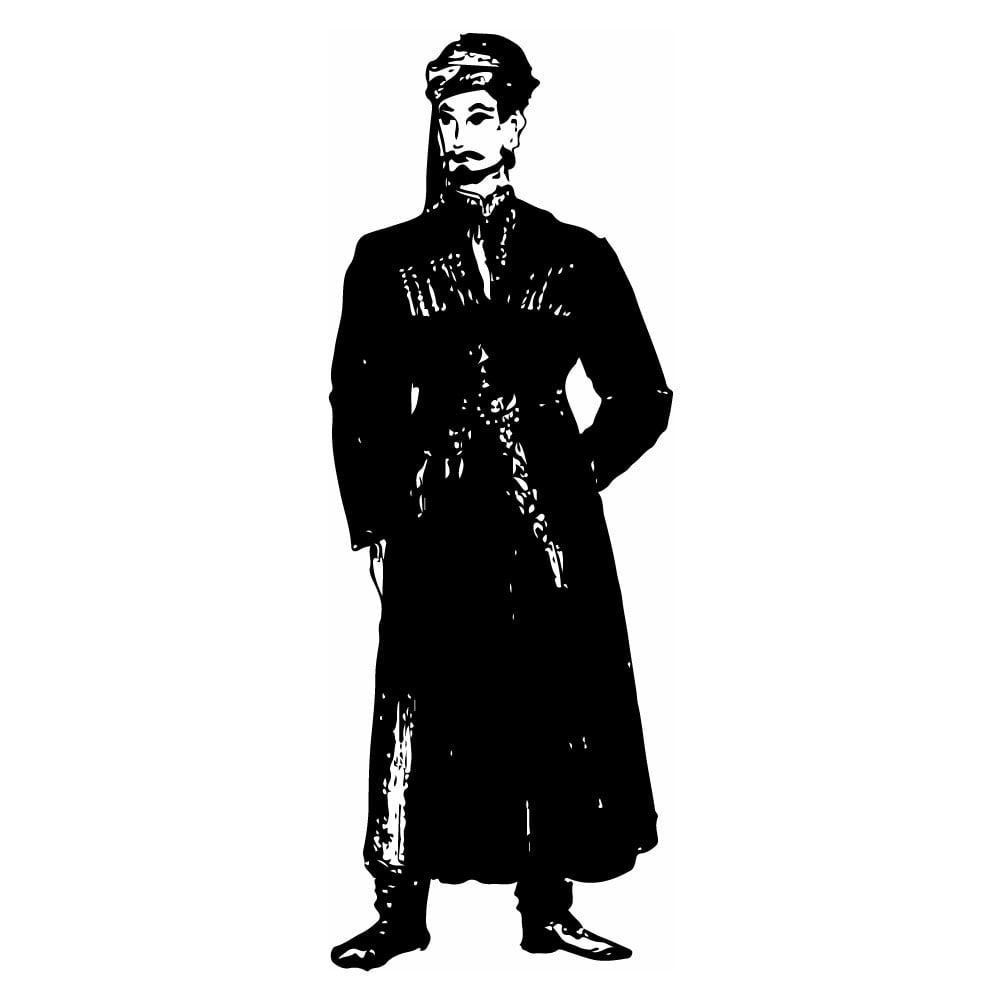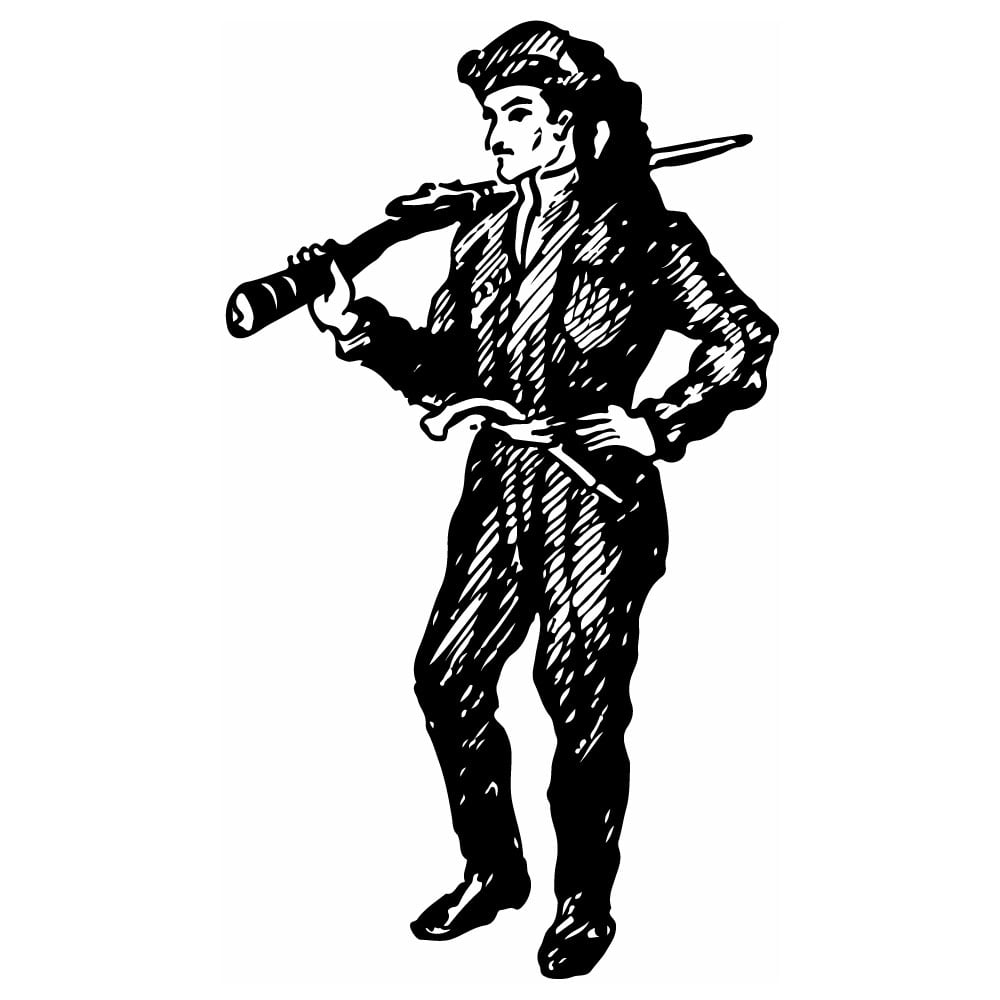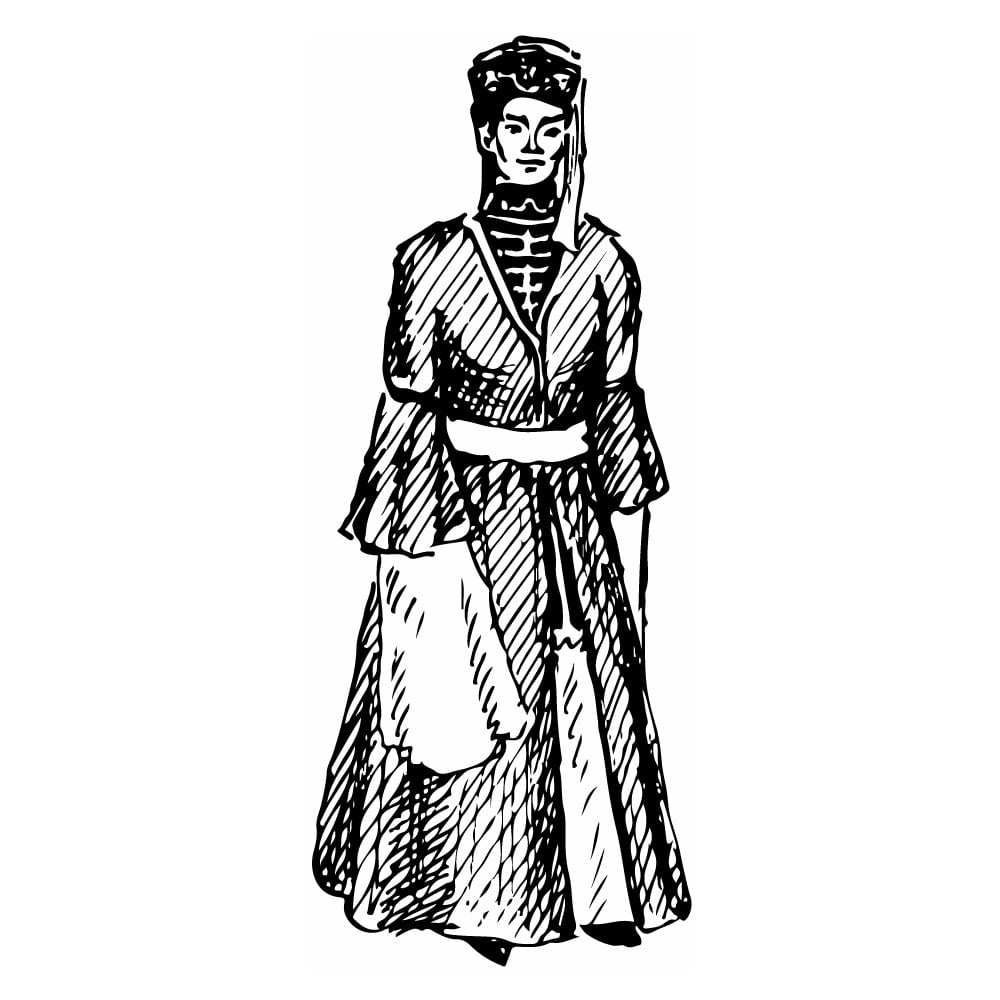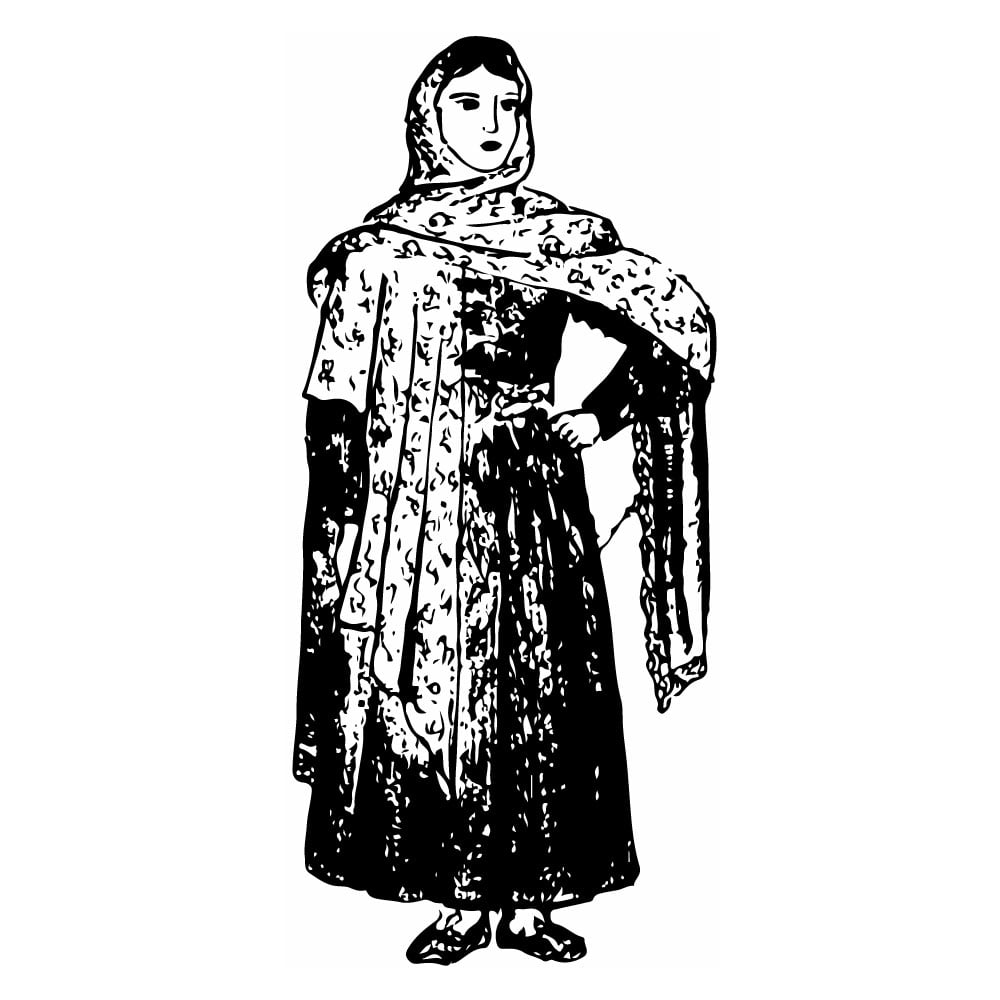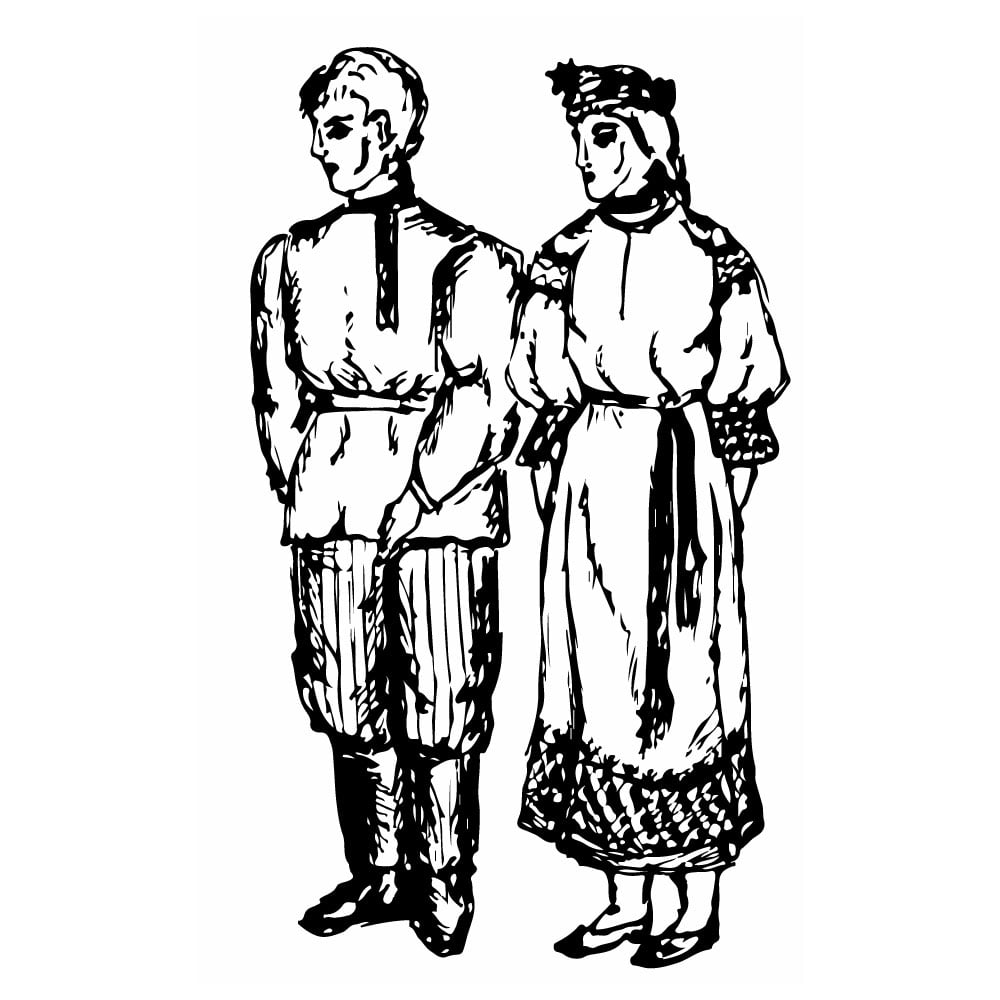Georgians
| Population | 5,401,000 |
| Language group | Kartvel group of the Caucasian languages |
| Language | Georgian |
| Religion | Christianity/Islam |
*Population estimates for 1994
Rich Georgian valleys lay between the mountain ranges of shores of Georgia. Archaeological data give all reasons to suppose that present Georgia is one of the territories which was inhabited by ancient tribes since times immemorial. In the twelfth to seventh centuries BC the tribes living there began to unite. The first Georgian state under the name of Kolkhida (Egriss) Kingdom appeared in the sixth century BC. Kolkhidkas (silver coins) were minted there for a long time.
The history of Georgia is the history of its people struggling with the aggressors. Arabs, Mongols, Khoresms, Persians and Osmans tramped tilled lands and mountain slopes with fire and sword. In spite of the constant enemy invasions the Georgians have preserved their original culture. For centuries have the Georgians been forging their national traits, such as patriotism, diligence, knight valor combined with kind lyricism and romanticism in tune with Georgian poetic nature.
The Georgian people were made up of three large closely akin ethnic groups, such as the Kats, Megrel-Chan (Zan) and Svans. A single national group of the Georgians began to shape out in the beginning of the first millennium BC. On the whole this process was completed in the sixth to tenth centuries when the Georgian nationality appeared. This period was characterized by the establishment of a single national language (Georgian), consolidation of the territory of the country and development of all-Georgian forms of culture (clothes, weapons, household utensils, etc.). At present almost all Georgians live within the borders of its country. Beyond these limits some clusters of Georgians can be found in the Northeastern Turkey and Iran. They all have preserved their culture, language and traditions.
According to the 1989 general census of the population of the USSR the population of Georgians was 3,981,000.
Anthropologically, all Georgians belong to the southern branch of European race. The Georgians themselves are not homogeneous by their anthropological characteristics. The inhabitants of the mountain districts belong to the Caucasian type that can be found only in the Caucasus. They are notable for large stature, massive skull, big head, wide face and rather frequent as compared to other South Europeans light eyes.
The Front Asian type dominates among the East Georgians. Its representatives are a bit shorter, have rather dark coloring of eyes and hair, and abundant hair on the face and body. The Pontian type prevails in West Georgia and Abkhazia. The Pontians differ from the Caucasians by small width of the face, less jutting nose and lighter pigmentation.
Previously the Georgians presented a very diverse and heterogeneous group of people as far as their religious beliefs were concerned. The great majority of the population professed Orthodox Christianity. A small group of the Georgians turned to Catholicism in the sixteenth-seventeenth centuries. In the same centuries the Georgians living in Mesket-Dzhavakhneti and Adzharia were forced to adopt Islam (the Sunni version) as a result of the Turkish assimilation policy, although the rudiments of the original pagan ideas still played an important role in the life of the local population.
The national clothes were very popular on the verge of the nineteenth-twentieth centuries. A choka (tunic) closely fitting at the waist made of woolen fabric with wide long sleeves and knee-long flaps was put on over a dark cotton or silk akhaloka (tight robe). The clothes emphasized the advantages of tight waist and broad shoulders of men. Akhalokas were girded with narrow silver chased girdles. Soft leather boots tight at calves with sharp tips and elastic soles were the most widely spread footwear.
The women’s dress was the same originally worn. The kartuli or a dress tight at the waist, kaba (long wide skirt covering legs and feet), and heeled counter-laced shoes were popular. A headdress consisted of the lechaka (a white triangular tulle veil), kopi (a thin cotton and silk roll), and chikhta (a paste-board rim covered with velvet).
The Georgian national clothes are not used now, especially in big cities. Only in some villages some elderly people still wear chokhas, akhalokas and traditional head dresses, although bright and colorful Georgian clothes are amply represented on stage. Many folk-songs and dancing amateur groups use them.
The Georgians are notable for their perfect ear and talent for music. One cannot image national holidays and banquets without songs and fiery dances. Jokes and laughter are inseparable from holiday meals.
This is Ad 1

